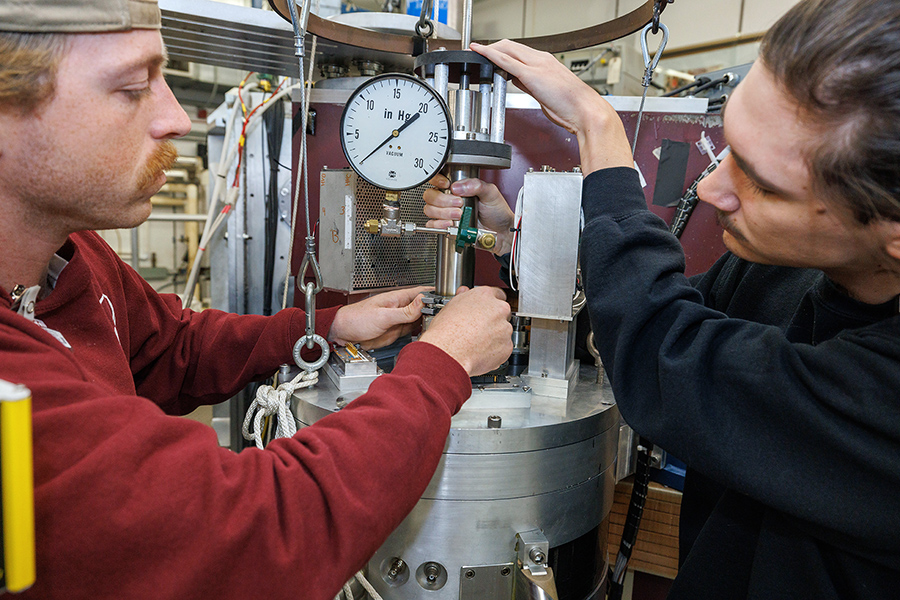A Northern Arizona University researcher is working to change that. Ronda Jenson, an associate professor in NAU’s Department of Psychological Sciences, believes these students fall out of the STEM pipeline because of challenges they face in college. She says the university environment characteristically is charged with social interaction, team projects and constant change, which can be stressful, overwhelming and more difficult for neurodiverse students than for their neurotypical counterparts.
Through a project she is leading as the principal investigator, “Developing a Collaborative Infrastructure for Educating STEM Undergraduate Students who are Neurodiverse Learners,” Jenson, along with co-PI Kelly Roberts, executive director of IHD, and researchers from The Ohio State University, Auburn University, the University of Missouri-Kansas City, the University of Hawaii and Kansas State University, are creating a strategic plan to support the success of these students in higher education leading to STEM careers.
The research project, which Jenson is conducting through NAU’s Institute for Human Development (IHD), began in December and runs through February 2022. It is funded through a $100,000 planning grant from the National Science Foundation (NSF) and aligns with the NSF INCLUDES Big Idea of identifying and developing a STEM workforce that reflects the diversity of the United States. The NSF grant identifies neurodivergence as a diversity factor.
Because the growth of the nation’s STEM workforce is important to economic and global competitiveness, Jenson believes developing STEM talent among all sectors of society is needed in order to grow the workforce. She says it is imperative to close the achievement gaps, which are widening in science and math, especially among students experiencing disabilities.
“My research starts with the assumption that STEM fields need neurodivergent thinkers,” Jenson said. “These learners are totally primed and in good alignment with a lot of STEM fields like computer science because neurodivergent thinkers contribute to creative problem-solving. They represent an opportunity to fill future job shortages, but the education environment leading to these jobs is not always set up for different ways of learning.”
Jamie Axelrod, director of NAU’s Disability Resources, agrees. “Being a student at a university is like being in a social environment essentially 24/7, except for sleeping,” he said. “It takes a lot of mental energy for students to process new academic information on top of learning the new context, expectations and rigor in a university setting. This is even more impactful for students with Autism Spectrum Disorder given all of the social engagement and social interaction. Oftentimes in STEM disciplines, there is a focus on working in groups or teams or with partners and that can be very uncomfortable for students on the autism spectrum.”
Of the total number of students at NAU who access disability services, 23 percent are in STEM and 13.9 percent are considered neurodiverse. Axelrod expects that percentage to grow.
“We’ve increased the number of technologies available to help neurodivergent learners. That includes software, social media and smart phone apps. In the end we still have numerous issues that impact retention,” he said.
A component of Jenson’s research includes interviewing neurodiverse NAU students in STEM, such as those with autism or ADHD, to understand the challenges they face by obtaining data about their lived experience.
“We’ll ask questions like, ‘What are your career goals, in what ways are you excelling in college and what are you finding frustrating in your courses?’” she said. “The literature tells us neurodivergent learners struggle to manage day-to-day activities, adapt to changes in routine, navigate social interactions and deal with sensory demands. Often they won’t seek accommodations or disclose that they have a disability because they fear a disability-related bias or social stigma.”
Jenson believes interventions to facilitate learning are beneficial for all students, but are not ubiquitously used, such as minimizing changes to routines and continuity; offering options for assignment completion and assessment; providing different types of learning material including audio versions of text books and Zoom course transcripts; encouraging the use of the chat box instead of speaking out in class; and tutoring through in-person or recorded sessions.
“Mentoring is key and a lot of students would benefit from this,” Jenson said. “If you have questions, you know who to ask.”
The ultimate goal is to raise the number of people with neurodiversity in STEM fields by increasing the population of undergraduate students with autism, ADHD and other diverse neurological disabilities that succeeds in STEM education.
About Northern Arizona University
Northern Arizona University is a high-research institution providing exceptional educational opportunities in Arizona and beyond. NAU delivers a student-centered experience to its nearly 30,000 students in Flagstaff, statewide and online through rigorous academic programs in a supportive, inclusive and diverse environment. Dedicated, world-renowned faculty help ensure students achieve academic excellence, experience personal growth, have meaningful research opportunities and are positioned for personal and professional success.



